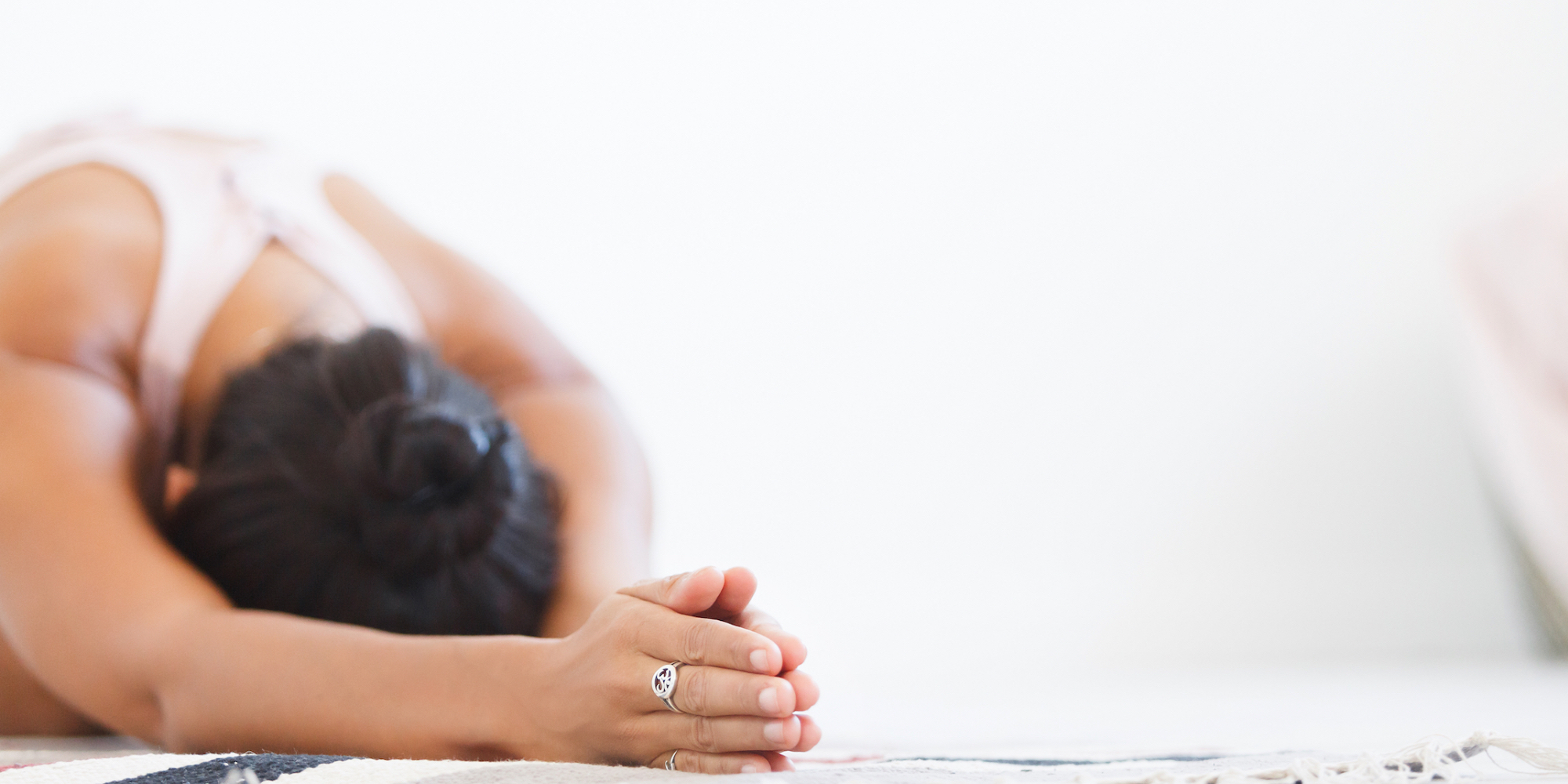From yoga poses and breathing exercises to guided meditation, many traditions practice energy healing to harmonize unbalanced chakras. If even one of our seven main chakras is imbalanced, it can throw us into a cycle of disorientation — even experiencing unpleasant physical symptoms.
If you feel an imbalance in your physical or mental health or just want to learn about chakras, follow along. In this article, we explore the seven major chakras, the symptoms of blockages for each, and practices to balance your chakras. Our app, Insight Timer, is a great resource to guide you through chakra-balancing practices. You can start today!
Key takeaways
- Chakras are important energy centers in the body, corresponding to different organs, emotions, and psychological states.
- When properly balanced, chakras promote optimal wellness and allow us to access higher states of being.
- Imbalanced chakras create physical tension, emotional disturbances, and cognitive setbacks like depression and anxiety.
- There are various meditations, yoga positions, and lifestyle and diet changes we can make to harmonize our chakras.
- Insight Timer’s free app offers guided meditations, yoga sessions, and sound healing for all levels to help with chakra alignment.
What are chakras?
Chakras are energy centers in our bodies that can impact our general well-being. In Sanskrit, the word cakra translates to wheel or disk since they are visualized as swirling wheels of energy. There are seven main chakras in the body, extending from the base of the spine up to the top of the head:
- Muladhara, the root chakra
- Svadhisthana, the sacral chakra
- Manipura, the solar plexus chakra
- Anahata, the heart chakra
- Vishuddha, the throat chakra
- Ajna, the third eye chakra
- Sahasrara, the crown chakra
These chakras correspond to large collections of nerves in the human body and are each associated with a major organ. This is why the flow of energy in each chakra, or lack thereof, can affect our physical and mental health.
How to balance your chakras
When our chakras are balanced, our prana (the yogic term for energy) flows freely through these energy centers, and we are content. When there are blockages or imbalances, energy can’t flow properly, leading to emotional instability and physical symptoms.
We need to open those blocked chakras to reclaim our personal power and boost our self-esteem (if it has been affected). Starting with the muladhara (root chakra) at the base of your spine, we’ll describe the seven main chakras, the signs of imbalance, and how to align them.
As you’ll see below, an imbalance in the chakras can mean that the energy center has either too much energy or not enough. The first step to chakra alignment is determining whether the chakra needs more or less energy.
Explore the key elements of the 7 chakras, their associated colors and sounds, and corresponding yoga poses to balance the chakras and replenish the regions they govern.
- Chakra Balancing Practice Caroline Stewart 27:58
1. The root chakra (Muladhara)
The root chakra’s role is to connect our energy to earth energy. You’ve likely heard the term grounding — this is what connecting to earth energy means. Since the root chakra is linked with our day-to-day survival, its role is to provide us with everything we need to live, from bravery to self-care.
Signs of an imbalanced root chakra
If our Muladhara contains excess energy, we’ll notice an increase in greedy and cocky behavior. If the root chakra’s energy is too low, we may feel shaky and disconnected from various aspects of our lives.
How to balance your root chakra
As with all the chakras, we can start by getting in touch with the chakra through its mantra, guided meditations, and associated yoga poses. Balancing poses like tree pose, warrior, and mountain get us in touch with the foundational and first chakra in the body.
Afterward, ways to increase our root chakra energy include:
- barefoot walks in nature
- gardening
- dancing
- yoga practice
To relax our root chakra, we can:
- give away any possessions we don’t need
- be proactive in expressing forgiveness to self and others
Check out the Insight Timer App for free loving-kindness meditations to help us develop unconditional love for ourselves and others.

2. The sacral chakra (Svadhisthana)
The second chakra is our Svadhisthana, located just below our belly button. The sacral chakra is all about our expression of creativity and sexuality, stirring us to enjoy our physical experience.
An optimal Svadhisthana or sacral chakra awakens our creative energy — it is the home of the creative life force that moves through us.
Signs of an imbalanced sacral chakra
An excess of energy in the sacral chakra can cause us to overlook our flaws. If we’re fixated on pleasure-seeking and overindulgence and feel reliant on others, we have too much sacral energy. When our Svadhisthana is low on prana, it causes creative obstacles, feelings of not being loved, and emotional instability.
How to balance your sacral chakra
Get in touch with your sacral chakra with the vam mantra and a pelvic-strengthening yoga practice. Bridge pose, pigeon pose, or lizard pose can be effective for tuning our sacral chakras.
We can boost our sacral energy by:
- connecting with water, such as oceans, rivers, or lakes
- conducting joyful, lighthearted activities
- indulging in a massage session
- practicing journaling regularly
To relax our sacral energy:
- create boundaries around work, friends, family, and romantic relationships
- explore Reiki or acupressure
What’s the best way to learn how to balance chakras? Through practice! The Insight Timer app has hundreds of free guided chakra meditation practices that help stimulate and unblock your body’s energy centers.
3. The solar plexus chakra (Manipura)
As the name implies, our third chakra is located at the solar plexus, a collection of nerves at the center of the abdomen. It is the seat of our self-confidence, personal identity, and power. Much of our bodily wisdom is contained in this energy center. The Manipura is where “gut feelings” come from, felt in our solar plexus as a visceral knowing.
Signs of an imbalanced solar plexus chakra
Excessive Manipura energy can flare up anger and resentment, making us feel desperate to control our environment. Too little solar plexus energy can cause a lack of focus, organization, and appetite, plus an increase in anxiety.
How to balance your solar plexus chakra
The ram mantra and core-strengthening yoga poses, like boat and triangle, cultivate awareness in the solar plexus chakra.
To amp up our Manipura energy:
- indulge in spicy dishes
- spend more time outdoors
- wear gold clothing and accessories
To relax our solar plexus chakra:
- consume drinks at room temperature
- practice deep and soothing breathing techniques
- try a floatation tank session
Ready to try yoga poses to balance your Manipura? Find the most effective solar plexus yoga poses on Insight Timer and get started today.
4. The heart chakra (Anahata)
We all associate our hearts with love, and love is exactly what the fourth chakra is all about. The heart chakra, or Anahata, is the center of love. This includes compassion, forgiveness, and a love for self and others. The heart chakra is the center of our energetic body and is considered to be the bridge between the spiritual realm and the physical one.
Signs of an imbalanced heart chakra
An excessive amount of heart chakra energy results in jealousy and feelings of neediness. If our Anahata energy is low or blocked, we may feel shy and lonely, with an inexplicable longing and the inability to forgive.
How to balance your heart chakra
Start with a yam mantra meditation and heart-opening yoga practice to connect with the chakra. Camel pose, wheel, cow face pose, and humble warrior all help open the chest and prepare our shoulders and arms for embracing others in loving-kindness.
To increase our heart chakra’s flow of energy:
- recite self-love affirmations
- watch movies about romance
- wear rose oil
- practice loving-kindness meditations
Calm the Anahata energy by:
- expressing love and gratitude to a friend
- focusing on compassion, joy, and tenderness
- reminiscing on happy memories through old photos or videos
Balance your Anahata with this part-body scan and part-chakra awareness practice on Insight Timer.

5. The throat chakra (Vishuddha)
The throat chakra gives a voice to our personal truths. Physically, our voice comes from our throat and lungs, but on an energetic level, our truth comes from our fifth chakra, the Vishuddha. It lets us speak our truth with clarity and listen with calm confidence.
Signs of an imbalanced throat chakra
Excess throat chakra energy can make us feel choked up and at a loss for words due to emotional overload. It can also make us more talkative, arrogant, and even manipulative. But if our throat chakra is energetically low, we feel shy and resort to passive-aggressive communication.
How to balance your throat chakra
Throat chakra balancing starts with yoga poses, such as plow and fish, and the ham mantra.
To increase Vishuddha energy:
- chant, sing, or pray
- voice your opinions
Relax the throat chakra energy by:
- listening to others as a compassionate witness
- drinking warm beverages
- silent processing — writing our thoughts instead of talking
From throat chakra yoga practice to throat chakra healing meditations, Insight Timer has what you need to start chakra balancing at home today.
6. The third-eye chakra (Ajna)
The ajna, or third-eye chakra, opens our minds to information beyond the material world and the five senses. Ajna energy is what some call our “sixth sense.” The third eye is linked to intuition, psychic guidance/decision-making, and clear sight.
Signs of an imbalanced third-eye chakra
An overactive third-eye energy center causes the mind to race with buzzing energy, making it difficult to focus. A blocked Ajna can have a negative impact on our memory, slowing our mental processes and causing decision paralysis.
How to balance your third-eye chakra
Start with the Ajna mantra and a yoga practice that connects the upper and lower body — forward fold and folded eagle are effective.
Build up your third-eye energy by:
- basking or hiking in the sun
- delving into your thoughts to find and release self-limitations
- keeping a dream journal
To calm the third eye’s flow of energy:
- indulge in fragrant aromas like sage or sandalwood
- go out at night and soak in the starlit sky
Explore free third-eye meditation practices that help to focus your attention on the third-eye energy center.
7. The crown chakra (Sahasrara)
The crown chakra is the energy of pure consciousness. It’s the most subtle energy center, located at the very top of the head or just above it. The rays of energy from this chakra radiate out in all directions to connect the soul with the energy of Unity, or God. Our individual consciousness is focused in the seventh chakra, as an expression of universal energy.
Signs of an imbalanced crown chakra
Signs of excessive crown energy include a fixated self-identity and a material worldview. If we’re low on Sahasrara energy, we may feel depressed, lost in the inner world, or removed from life.
How to balance your crown chakra
Start with om mantra meditations and yoga poses like savasana (or corpse pose). Death meditations connect us with our essential selves by reminding us of our eternal, true nature.
We can increase our crown chakra energy by:
- learning
- contemplating oneness
- meditating
To relax our crown chakra:
- witness and release thoughts
- avoid dwelling on transforming the ego-self
You can practice crown chakra balancing at home — the Insight Timer app has hundreds of meditations that can help you soften your ego and connect with your Higher Self.
What does chakra balancing do?
Self-chakra balancing helps us let go of stagnant energies, harmonizing the flow of energy in these areas. Balanced chakras in the body help us feel physically and emotionally optimal. Regular self-chakra balancing, either daily or weekly, promotes well-being by managing our mind, body, and spirit.
How do I know my chakra balancing is working?
When chakra balancing works, we feel grounded, confident, expressive, self-accepting, charismatic, loving, authentic, intuitive, self-aware, clear-headed, and whole.
Start energy healing now and balance your chakras
Our high-tech culture can make it hard to find time to attune to and balance our chakras. But there’s always a positive side — the Insight Timer app can support your growth and wellness journey right from your home, office, or even the park!
We provide access to over 18,000 of the world’s leading teachers and over 200,000 free resources, with guided meditations from psychologists, spiritual leaders, and mindfulness teachers. Plus, you’ll join a growing community of like-minded individuals exploring their spiritual paths.
Whether you’re just learning about the seven major chakras or seeking a more advanced level of chakra balancing, Insight Timer offers a wealth of knowledge to guide and enrich your healing journey.
FAQs about chakra balancing
How do I know if my chakras are blocked?
Blocked chakras can manifest as physical tension or even pain around the chakras in the body. They can also manifest as emotional imbalances: Scattered thoughts, insecurity, anxiety, selfishness, depression, or fear of rejection are all examples of blocked chakras.
How can I rebalance my chakras?
Chakra balancing begins by aligning our physical body and calming our mind. Special attention to diet, exercise, daily or weekly yoga practices, and guided meditations can target blocked chakras. The Insight Timer app includes yoga practices and guided meditations for major chakra balancing.
What are the best chakra-balancing techniques for beginners?
Ayurvedic diets, color visualization practices, connecting with nature, and learning to see the “One” in everything are spiritual ways of chakra balancing. Specific breathwork, chanting, and yoga poses can target the seven main chakras for stimulation or relaxation. All-inclusive yoga and meditation apps like Insight Timer offer easy solutions for each chakra.







